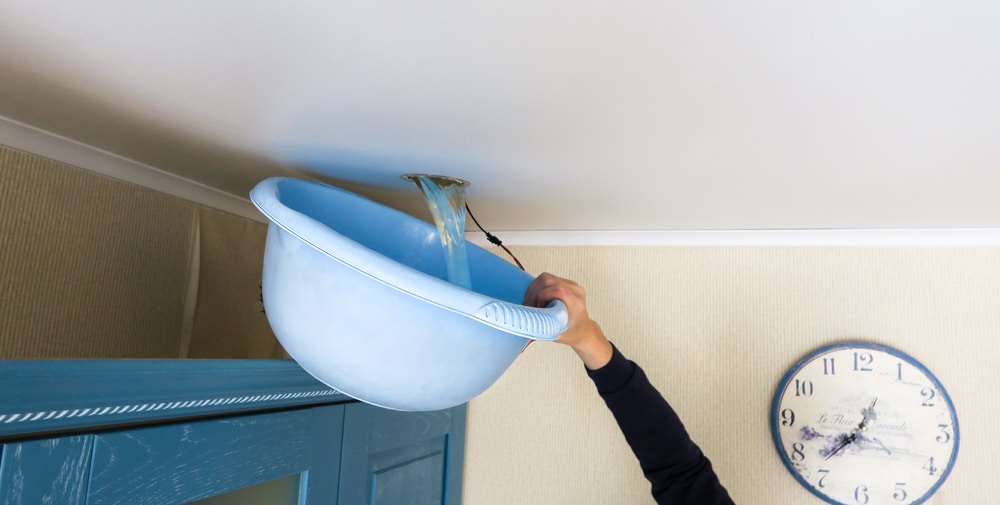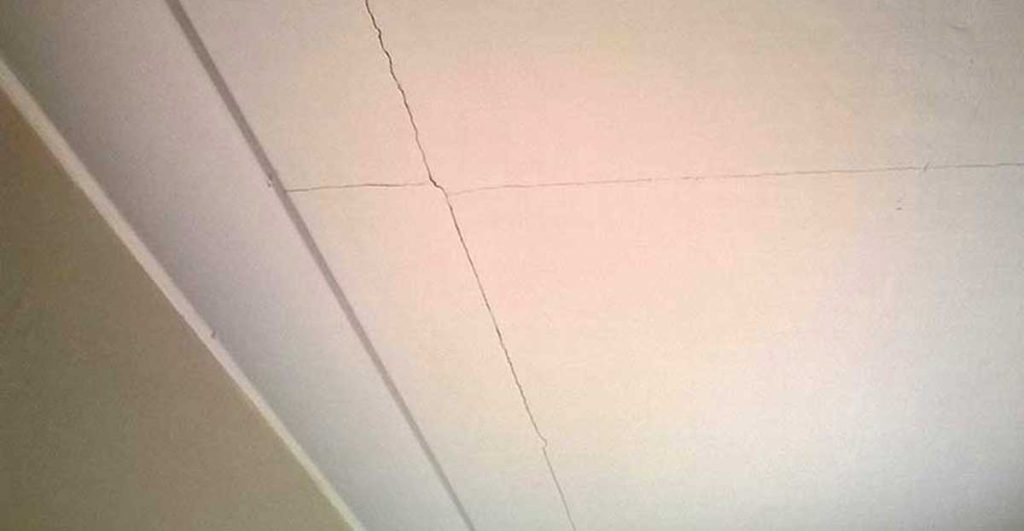Flaking paint on the ceiling can be an unsightly and frustrating problem in any home. Over time, ceilings are exposed to humidity, heat, and the natural aging process, which can cause the paint to crack, peel, or flake off. Fortunately, fixing flaking ceiling paint is a manageable task that you can tackle with the right tools and techniques. In this guide, we will walk you through everything you need to know about repairing flaking ceiling paint, from preparation to finishing touches.

What Causes Flaking Ceiling Paint?
Before diving into how to fix flaking ceiling paint, it’s important to understand what causes this issue. Several factors can contribute to the deterioration of ceiling paint:
- Humidity and Moisture: Bathrooms, kitchens, and areas with poor ventilation are more prone to high humidity, leading to moisture damage that can cause paint to peel.
- Age of the Paint: Over time, old paint can become brittle and prone to flaking.
- Improper Surface Preparation: If the ceiling wasn’t properly cleaned or primed before painting, it may result in poor adhesion and peeling.
- Water Leaks: Ceiling paint can flake off if there’s an underlying water leak from the roof or plumbing.
- Temperature Fluctuations: Extreme temperature changes can affect the paint’s bond to the ceiling surface.
Read too: Bathroom Flooded Through the Ceiling: A Comprehensive Guide
How To Fix Flaking Ceiling Paint: Step-by-Step Instructions
Fixing flaking paint on the ceiling involves several steps, each essential to achieving a smooth and lasting finish. Here’s a comprehensive guide on how to fix flaking ceiling paint.
1. Gather the Necessary Materials
To repair flaking ceiling paint, you will need the following tools and materials:
- Drop cloths or plastic sheeting
- Painter’s tape
- Putty knife or scraper
- Sandpaper (medium and fine grit)
- Primer (preferably mold-resistant)
- Ceiling paint (choose a durable, moisture-resistant option)
- Paint tray and roller
- Step ladder or scaffold (for higher ceilings)
- Caulk or spackle (for small holes and cracks)
2. Prepare the Area
Before you begin working on the ceiling, make sure to protect your furniture and floors:
- Lay down drop cloths or plastic sheeting to catch any debris and paint drips.
- Use painter’s tape to cover the edges of walls, light fixtures, and moldings that you don’t want to paint.
It’s important to ensure that the room is well-ventilated, especially if you’re using strong cleaning or painting materials.
3. Remove Loose, Flaking Paint
The next step is to remove any loose or peeling paint from the ceiling. This can be done using a putty knife, scraper, or a wire brush.
- Scrape off the peeling paint: Gently scrape the surface to remove all the flaking paint. Be cautious not to damage the underlying drywall or plaster.
- Sand the area: After removing the flakes, use medium-grit sandpaper to smooth the surface. This will help to create a better bond between the primer and the ceiling.
4. Clean the Ceiling Surface
Once the loose paint has been removed, it’s important to clean the ceiling to remove dust, dirt, and any mold or mildew.
- Wipe the surface with a damp cloth: This will remove the dust and debris created during the scraping and sanding process.
- Treat mold or mildew: If you notice any mold or mildew growth on the ceiling, clean it with a mixture of water and mild detergent. For tougher spots, you can use a solution of bleach and water (1 part bleach to 3 parts water).
5. Repair Cracks and Holes
If you discover any cracks or holes in the ceiling, it’s essential to repair them before applying primer and paint.
- Use caulk or spackle to fill in small cracks or holes. For larger holes, you may need to apply a joint compound.
- Smooth the surface with a putty knife and allow it to dry completely.
- Once dry, sand the area smooth to ensure it blends seamlessly with the rest of the ceiling.
6. Apply a Primer
Applying a primer is crucial for ensuring the new coat of paint adheres properly to the ceiling and provides a uniform finish. It’s especially important if you’re painting over patched areas or if the previous paint was poorly applied.
- Choose a primer suitable for your ceiling type (e.g., drywall or plaster).
- Apply the primer evenly with a roller, starting from one corner and working your way across the ceiling. Be sure to cover all areas where you removed flaking paint.
- Allow the primer to dry according to the manufacturer’s instructions.
7. Paint the Ceiling
After the primer has dried, it’s time to paint the ceiling.
- Choose a quality ceiling paint: Opt for a durable, moisture-resistant paint that’s specifically designed for ceilings. If you’re painting a bathroom or kitchen, consider using a mold-resistant paint to prevent future peeling.
- Apply the paint: Use a roller to apply a smooth, even coat of paint across the ceiling. For edges and corners, use a brush for better control.
- Allow the first coat to dry completely before applying a second coat, if necessary.
8. Final Touches
Once the paint has dried, inspect the ceiling for any missed spots or imperfections. If needed, touch up any areas with a small brush.
Remove the painter’s tape from the edges, being careful not to peel the new paint. Clean your tools, dispose of any debris, and enjoy your newly restored ceiling!
Tips for Preventing Future Ceiling Paint Flaking
While repairing your ceiling paint will restore its appearance, it’s important to take measures to prevent flaking in the future.
- Maintain proper ventilation: Ensure that your home is well-ventilated, especially in high-humidity areas like bathrooms and kitchens.
- Use mold-resistant paint: For areas prone to moisture, consider using mold-resistant paints and primers.
- Fix leaks promptly: If you suspect a leak, whether from a roof or plumbing, address it immediately to prevent water damage and paint peeling.
- Install a dehumidifier: In areas with high humidity, a dehumidifier can help keep the air dry, preventing moisture buildup on your ceiling.
How To Fix Flaking Ceiling Paint: Troubleshooting Common Issues
Sometimes, even after following all the necessary steps, issues like peeling paint can persist. Here are a few potential problems and solutions:
1. Paint Peels Again After Repainting
If your paint continues to peel after you’ve repaired and repainted the ceiling, it could be due to persistent moisture problems. Check for hidden leaks or excess humidity and address them before attempting to repaint.
2. Uneven Paint Application
If the paint appears streaky or uneven, it might be due to not applying enough coats of paint or not allowing the primer and paint to dry completely between coats. Ensure you apply multiple coats, allowing adequate drying time in between.
3. Cracking Paint
Cracking in newly applied paint is often a result of improper surface preparation or using the wrong type of paint. Make sure to sand and prime the surface before painting and use a high-quality, flexible paint designed for ceilings.
Conclusion: Restore Your Ceiling with Confidence
Fixing flaking ceiling paint is a relatively simple and cost-effective way to restore the beauty of your home. By following the right steps and using high-quality materials, you can achieve a smooth, durable finish that will last for years. Remember, proper maintenance and attention to environmental factors like humidity can help prevent future peeling.
By understanding the root causes of flaking paint and how to address them, you can ensure that your ceiling remains in great condition, enhancing the overall appearance of your home.

